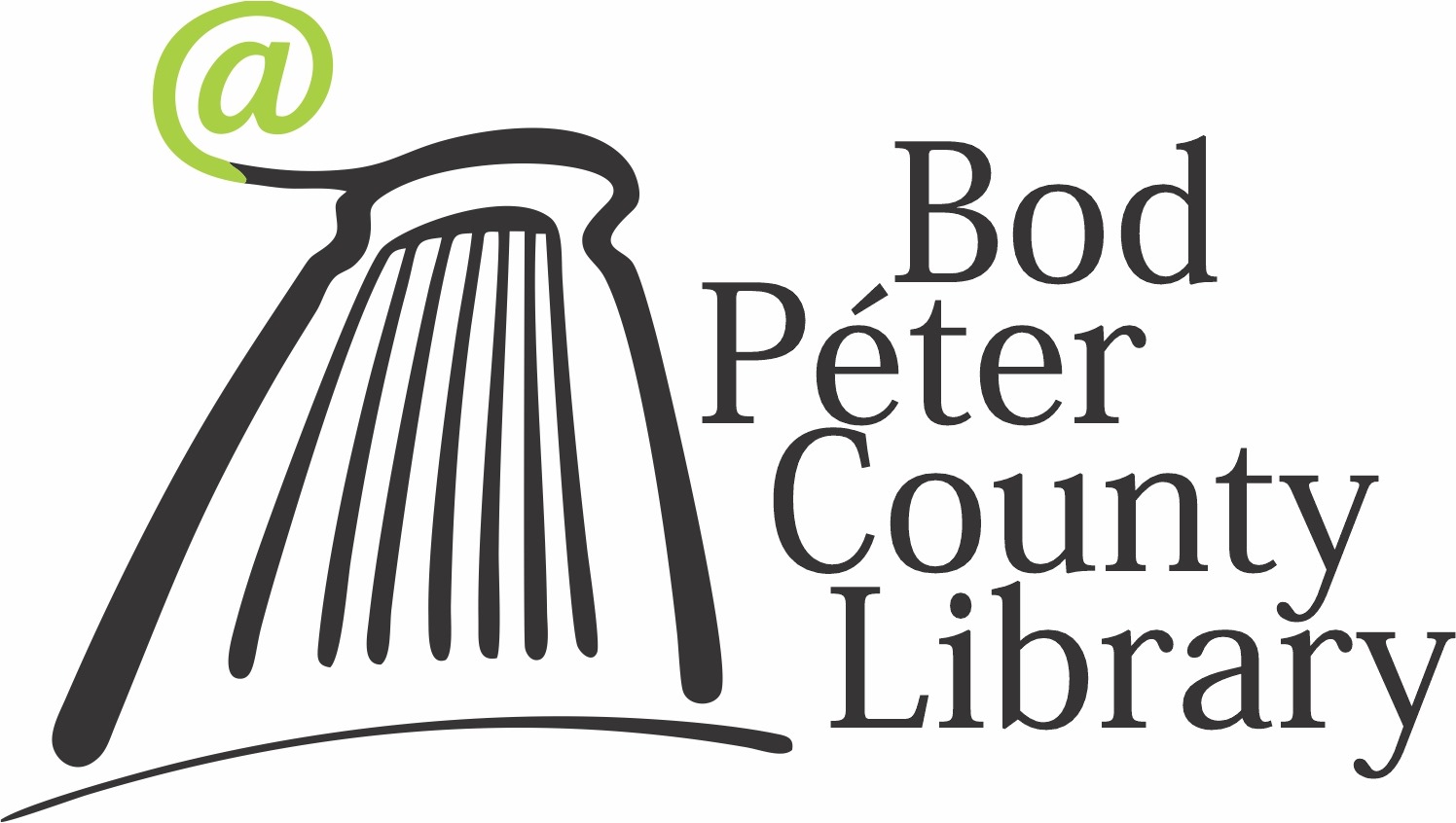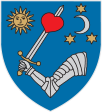Our history - Timeline
Libraries from Sfântu Gheorghe – Timeline
The beginnings of the librarian movement in Sf. Gheorghe and Covasna county, can be found in the 19th century, so-called “The Age of Reforms”. The public library itself was not founded in the town, however in the second half of the 19th century or in the first half of the 20th, even though there were requests for such a thing. Other institutional forms took upon, nevertheless, public library services.
In 1872, the Protestant Association from Háromszék proposed the establishment of a public library, but the initiative did not materialize. In 1902, when the local counselors asked for the help of the agriculture minister for founding a public library, the 173 volumes received from the ministry were further donated to the Literary Association of Craftsmen in Sf. Gheorghe. Probably, this association was appreciated as the closest to the inhabitants of the town, and the fund of the library as satisfying the requests of those times' readers.
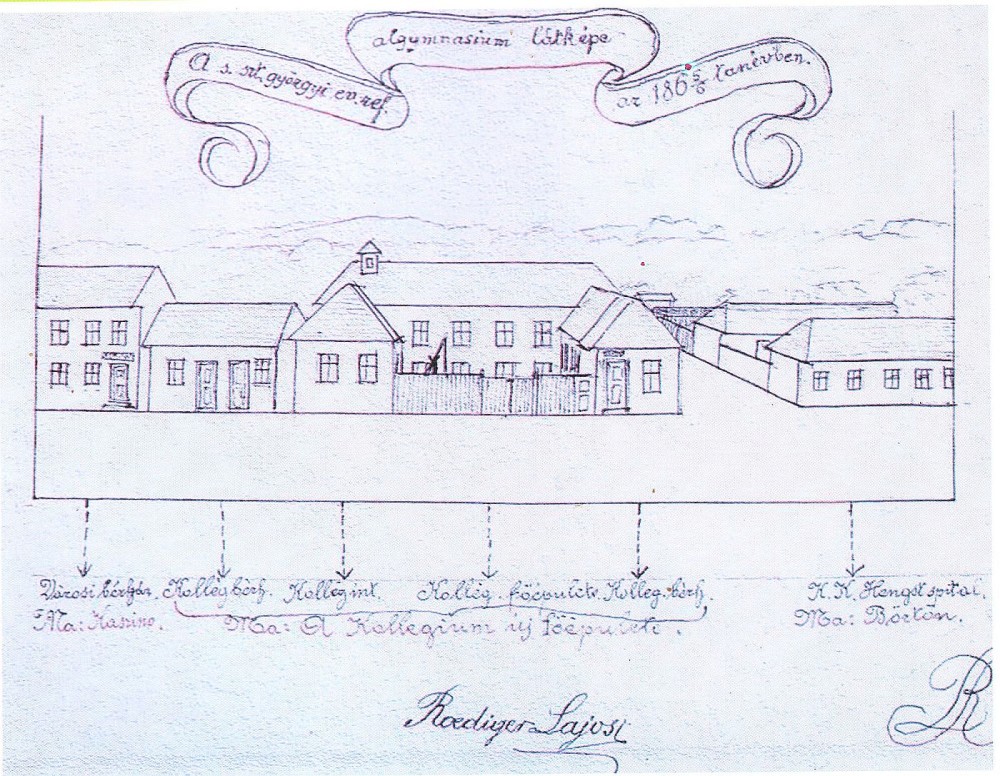
Roediger Lajos' s drawing about the buildings located on the Protestant Association's land
The requirements of the community regarding the actual founding of a public library were emphatically brought about and the responses to them were formulated depending on capabilities. Noteworthy here is that Mihály Kiss, Unitarian dean from Arcuş, reports in 1864 in an article of the newspaper KolozsváriKözlöny from Cluj, that before 1869, when the public library of the Casino in 1869 itself began functioning, DomokosBarthos opened a book shop in Sf. Gheorghe in the 1860s. Its shelves hosted calendars, school books, as well as novels and reading books. The article mentions the fact that the owner of the library borrowed books for reading at home. (After more than 60 years, in 1925, the merchant Jenő Klein used the same method, publishing an article in the local newspaper, that his library offered modern books and the most recent publications on loan.)
The Association of the Social Life or the Casino – initially founded in February, 1835, and after more administrative phases of its formation, began functioning in a real way at the end of the 1860s – was a meeting place for people with different professional and cultural backgrounds, representing, in a way, the bastion of the cultural life in the town.
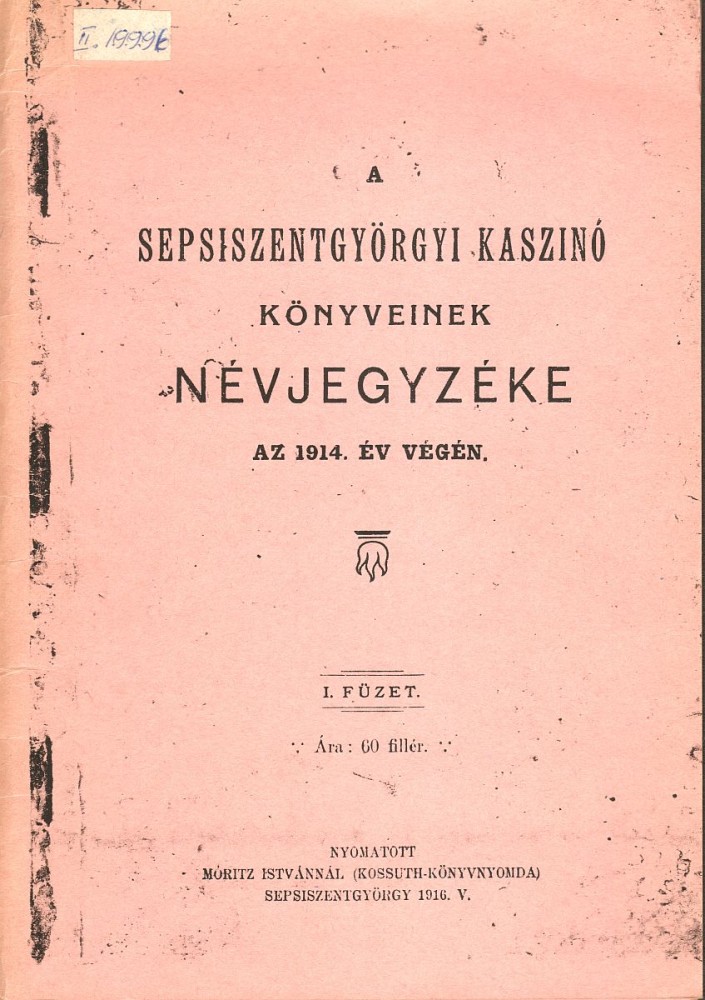
Register of books in the Casino Library - 1914.
In those times, the libraries established in Sf. Gheorghe functioned as part of associations or higher institutions. Access to them was limited to members, the majority of the libraries as well as the Reading Associations of Craftsmen in Sf. Gheorghe, the Library of the Merchants and Young Merchants Association or the Central Library of the Didactic Grouping in Háromszék, satisfied the requirements of their members.
Similar requirements were serviced in the mid-1920s until 1940 and by the fund of a few hundreds of volumes of the library from Sf. Gheorghe of the Central Department in the Háromszék county of the Astra Society, as well as by the Library of the Sport and Culture Association “Junimea” from Háromszék. Established in 1859, the scientific library of the Reformed School (later SzékelyMikó College) represented a collection of rare and precious books. Because of this, the School founded the Library for Poor students, with a collection of school books, with the aim of serving financially disadvantaged students. In the SzékelyMikó College, there was another library functioning – the Library of the Stenography Societ, which included specialty books and periodicals.
The fund of the Scientific Library of the National Székely Museum did not serve the requirements of the lay people either. It functioned more as an amalgam, an archive and a documentary library, with a rich fund of old and rare books, which especially served research and scientific purposes. At the beginning of the 20th century, there was a real demand for the establishment of a modern public library in the Háromszék region as well. Two Museum Studies scholars in the Székely Land, VilmosCsutak and Dr. FerencLászló, signaled in 1909 the necessity of founding a public library in the town. The state could not be counted on for help in this matter and there was also the problem of lack of space for this institution. Eventually, when this problem was virtually solved, the First World War intervened, then the imperial change, the issues regarding minority statuses and the Second World War as well.
After 1945, the libraries founded due to the initiative of the new political regime were propagandistic, many of them functioning as culture centres (Aita Mare, Leţ, Sânzieni etc.).
After the1948 nationalization, more libraries were established in Sf. Gheorghe, one for almost every institution: the Library of the Local Sanitary Syndicate Committee, the library of the Agriculture Department of the Popular Council from the Sfântu Gheorghe District of the Hungarian Autonomous Region, the library of the local printing house, the one of the Media and Culture Committee, of the Branch of the Háromszék Associations, the library of the local unit of firemen, respectively the libraries of plants and factories.
Out of these, the most important was the library of the National Hungarian Theatre from Sf. Gheorghe, founded in 1948. Its fund encompasses 2000 volumes and was constituted to serve the interest of political education of its members. The Library of the Textile Factory Syndicate functioned for a long time, until 2008, when it was shut down. It aimed to educate the newly-formed working class, through its fund and its meetings with Transylvanian authors. The library of the Didactic Grouping had on stock, in 1976, 13000 volumes. The Library of the Central Committee of the Regional Party Cabinet had around 20000 volumes, and it was closed in 1989. Some of the fund was catalogued as “ideologically outdated”, it was scrapped, and the books of the library were later incorporated in the fund of „Bod Péter” County Library.
Besides the listed above, in the mid 1970s, each school in Sf. Gheorghe already had its own library – except the professional school. The primary schools each had a fund of 5-7000 volumes, in the Secondary School no.2 and the Textile Secondary School there were 10 000 volumes and the Secondary School no. 1 had around 14600 volumes for its students.
During Ceauşescu’s regime, in 1975, a library of the Culture House of the Syndicates was founded. According to what the librarian in this insitution said, its fund exceeded, in 1977, 5000 volumes. Here, too, public meetings between the public and the writers have been held, and also between representatives of publishing houses; there was also a literary and poetry readings circle. A significant fund was in the posession of the library of the Agronomists’ House in Arcuş. Here there were specialty books, which were donated by the Agriculture Minister from Hungary. Part of these were also scrapped and the rest were later transferred to the County Library „Bod Péter”.
On the way to building popular democracy and founding socialism, at the start of the 1950s the library from the Culture House „Petőfi Sándor” from Sf. Gheorghe was established. This later became the Central Library of the District, and its fund increased, transforming the institution in the District Library and then the City Library. Its shelves mostly and mandatory hosted the thinnest brochures of the Political Publishing House from Bucharest. Beginning with the second half of the 1960s, the children’s section of the library was increasingly dominated not by Soviet literature, but publications of the publishing houses from the country. There was also a limited number of volumes of Hungarian and foreign literature, received from the Hungarian Republic. After splitting thecounties (1968), the City Library from Sf. Gheorghe was advanced to the rank of County Library, in 1974. The fund of the County Library Covasna, in 1977 surpassed the number of 100 000 volumes. At that time, the institution was functioning already as a public and loan library.
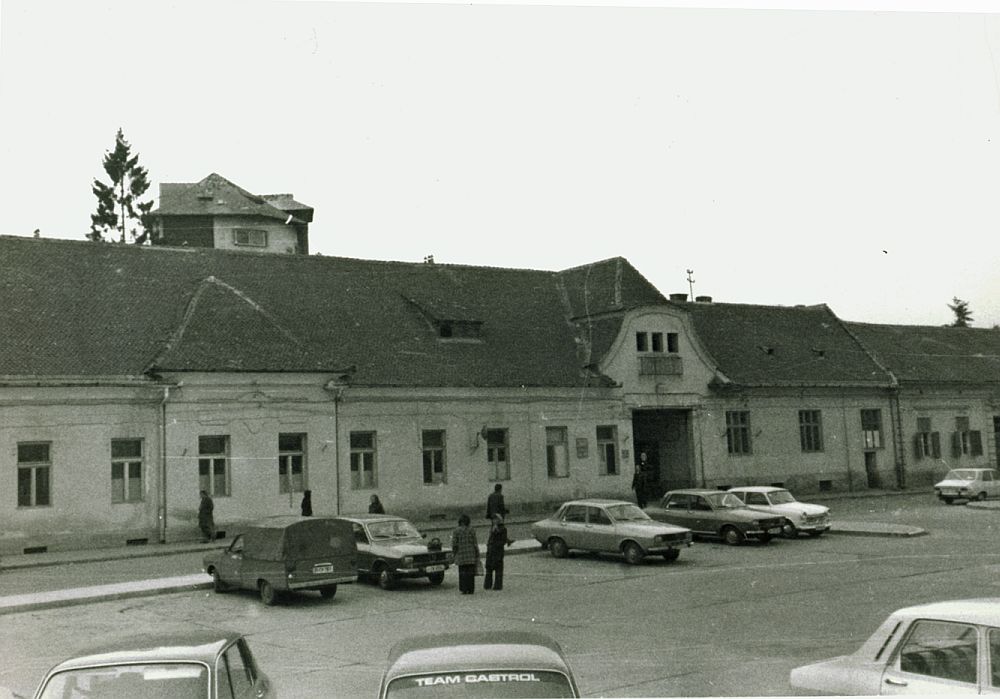
The former Kupfertisch House: in its right wing was the Municipal Cultural Center and the Petőfi Sándor Library.
The Present of the County Library
The regime change in 1989 brought numerous positive things in the existence of the library. In 2006, it receives the name of „Bod Péter” County Library, after the name of the distinguished scholar from Cernatul de Sus (whom you can read about by flipping a few pages), and it begins to serve the readers and visitors of the three sections from its central headquarters – the library of the former headquarters of the Chairs, built in 1832, classified as historical monument, - respectively its branch in the town, the latter with a fund of 16 000 volumes.
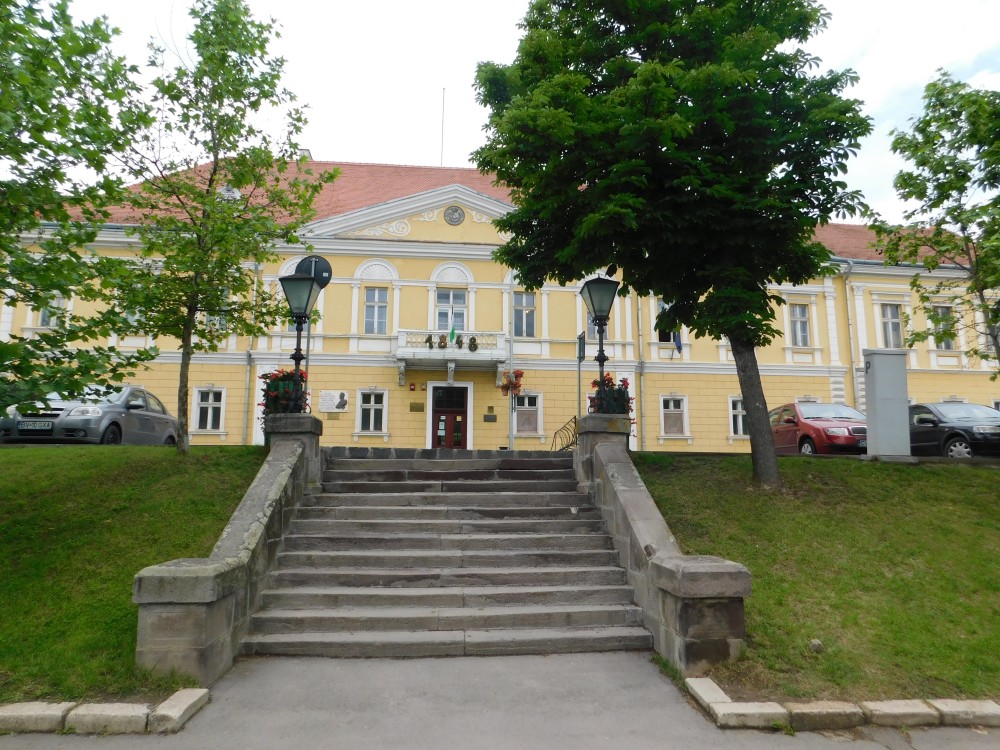
The library building today
The library provides methodological support of the 39 public libraries in Covasna county, it offers increased attention to the development of the legal depositfor the publications edited in the region, repectively of the aquisition of the ones with Covasna-related themes and references (including the ones regarding the Székely Land), in the field of local and regional history. As a county library, the institution is implicitly the library of the town – county residence in which it functions. Regarding the mission of the „Bod Péter” County Library, this is one of functioning – as a cultural institution – with a role of a veritable communitary space, respectively as a cultural partner in an as wide as possible area, by emphasising and connecting among them the cultural values of the Sf. Gheorghe municipality and of the Covasna county.
The continual improvement of the library’s services, as well as the vivid connection it has with the public libraries from the county, respectively the suite of cultural programmes and projects, its own and the ones done in partnerships, helped to achieve the library’s objectives.
The cultural actions are meant to ensure that library users spend their free time in a useful, productive and pleasurable manner. The library wishes to introduce a loyalty system to the existing users, respectively to attract new users interested in its spiritual and cultural offer.
The key-element of these actions and the programme is the unmediated meeting, the fusion of impressions and positive persistent feelings among the author, the creation, the theme and the public. Most frequently, the activities are materialised by authors’ evenings, book presentation, publishing houses and editorial’s evenings and lecture marathons. The guests of these events are distinguished personalities and institutions, belonging both to contemporary Romanian and Hungarian literature. The library proved to be open in the past few years to musical programmes, plays and film projections. The complex childrens’ programmes are very important, respectively the ones regarding local and regional history. Every year, there are about 40-45 activities and cultural events led by the library or in partnership, at the headquarters as well as in other locations or outdoors.
In the programme ‘Könyvkelengye / La drum cu lectură’ (Lecture on the Go), held in the library and in partnership with the town hall of Sf. Gheorghe, was launched in April 2010, and was designed for babies of Sf. Gheorghe and their parents, who received a gift consisting of a little pack of books suitable for up to 3 years of age. They are volumes in Hungarian or Romanian, accompanied by guidelines for reading and the newborn’s first library card.
Until February 2020, 1252 newborns and their families received our pack of books. Furthermore, by expanding the range of beneficiaries, 5122 pupils of 1st, 4th, 8th, 12th and 13th grade were given gift books between 2011 and June 2019.
The mobile library service of the institution served, in the past years, five groups of nursery and primary school grades from Sf. Gheorghe, respectively the readers with locomotory disabilities.
Following an applications contest the County Library participates in March 2010, in the national programme of public libraries development Biblionet, initiated by the Bill and Melinda Gates foundation and coordinated in Romania by the IREX Foundation. In the first countystage, in 2010, the county library and other 18 public libraries from the Covasna county benefited from a half a million lei investment, in the form of technical equipment (computers, projectors, scanners, printers and accessories), software programmes, training costs. Thus, 18 Internet Centres for the Public were established in the participant libraries. In the second county stage of the programme, in 2011, other 11 localities from Covasna entered the programme, and the county library and the branch in Sf. Gheorghe will also be equipped with valuable IT facilities.
In a pilot-project, in 2009, the county library started the digitization and securing the documents of local history, the subject of the activity so far being the first newspaper in Sf. Gheorghe called Nemere (Nemira), of which three annual series were finished (1877, 1878, 1879). It is intended to continue in the perspective of this activity, still regarding newspapers for now.
The statistics of use of the library indicates, at the end of 2019, a number of 8910 users, who have at disposal a fund of 249 379 library documents, out of which 245 867 books and periodicals, respectively 3508 electronic documents (the development of this collections is a new, priority effort of the library as there is a constant request for this kind of documents).
